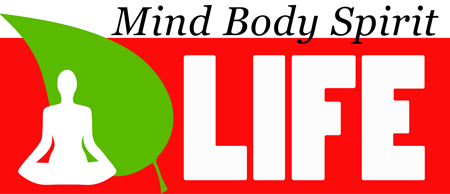Life Lessons From Running 2,000 Miles Over 365 consecutive days

I like to run so it was no surprise that I found time to run every day while on vacation. On the last day of vacation, in the midst of my tenth consecutive daily run, I realized I had never before run that many successive days. I began to muse about maintaining the streak. How many days could I go? An entire year? Running every day for a year seemed daunting but I was intrigued by the mental and physical challenge so I decided to try.
 365 days later, I had covered nearly 2,000 miles. I thoroughly enjoyed the experience. As the seasons slowly shifted, I enjoyed running through crisp autumn afternoons, cold winter mornings, warm spring evenings, and hot summer days. Most miles were on the familiar streets of my neighborhood but I also ran along the surf at the shore, over winding mountain roads in Switzerland, through busy city streets, and across the cobble stone pathways and bridges of Venice. I ran under bright sunny skies but I also ran through thunderstorms, blizzards, and the dark of night.
365 days later, I had covered nearly 2,000 miles. I thoroughly enjoyed the experience. As the seasons slowly shifted, I enjoyed running through crisp autumn afternoons, cold winter mornings, warm spring evenings, and hot summer days. Most miles were on the familiar streets of my neighborhood but I also ran along the surf at the shore, over winding mountain roads in Switzerland, through busy city streets, and across the cobble stone pathways and bridges of Venice. I ran under bright sunny skies but I also ran through thunderstorms, blizzards, and the dark of night.
Just as conditions varied from day to day, so did the length of each run. I averaged roughly five miles a day, but some runs consisted of nothing more than an easy mile or so that took less than ten minutes to complete. On other occasions, my daily run was the 26.2 miles of a marathon that kept me on my feet for several hours. Each run had its own cadence and each run provided quiet time to reflect on the day’s events or think about the day ahead.
This “Zen” of the run helped crystallize several lessons that I have taken from running and applied to other areas of my life:
STARTING IS ALWAYS THE HARDEST PART
Getting motivated to get up and out the door is not always easy. My excuses were endless. Sometimes it was too early, too cold or too wet. Other times I was too tired or too busy. Generating the mental strength to overcome the excuses and push myself out the door was a constant challenge but I did it 365 days in a row.
I discovered that the first 15 minutes of any run is usually the hardest. It takes a little time to get warmed up and in a groove but once you hit your stride it gets easier. If you have never stuck with a run long enough to get past the hard part, you might reasonably conclude that running four miles is twice as hard as running two miles. It’s not. Running twice as far will take twice as long but is nowhere near twice as hard. Starting is always the hardest part.
As running became my daily habit, I came to relish the mental and physical jumpstart that energized and enhanced the rest of my day. Although I didn’t always feel like getting going and I often felt myself slogging through the beginning of the run, I always felt better afterwards.
My take-away: Adopt the Nike slogan and “just do it” because it gets easier every time you do.
EVERYONE HAS THE SAME AMOUNT OF TIME
How you chose to spend your time reveals your priorities since you make time for what you decide is important. By committing to my goal of running each day for a year, I made my daily run a priority and I found ways to fit it in to my daily schedule. If I spent an hour running, it was an hour I could not spend on something else (usually sleep). My priority. My decision.
Over the course of the year, I ran roughly 280 hours. This may sound like a lot, but the average American’s annual investment in TV time is more than four times that amount. We all have the same amount of time and we all make choices in how we spend it.
My take-away: Prioritize how you invest your time. Make time for those things you deem important.
PACE MATTERS
When you have a long term goal pacing the effort is important because finishing, and finishing strong, is far more important than starting strong. It’s easy to start strong because energy and enthusiasm are abundant at the beginning of any journey. As time goes on, distractions and fatigue can make it difficult to maintain focus and commitment.
As I started running every day, it did not take long to realize that I needed to find a sustainable balance between pace and distance. Pace is also dependent on external conditions that were out of my control. I could run fast on a cool spring morning but could not match that pace in the midst of a winter blizzard or through an August heatwave. I was able to sustain my effort only by acknowledging and responding to the need to vary my pace in response to changing conditions.
My take-away: Striving to maintain a consistent effort may seem like a good goal but in reality, energy naturally ebbs and flows as does focus and attention. Rather than fighting the ebbs and flows, recognize them and adjust pace and effort accordingly.
IT’S BETTER TO TUNE INTO THE EXPERIENCE THAN TRYING TO DROWN IT OUT
I always considered music and headphones to be critical to a positive running experience. The prospect of running without music was as incomprehensible to me as running without shoes or clothes. As I ran more, that began to change. I gradually came to appreciate the simple pleasure of tuning into the different sights and sounds each run provided.
Over the course of the year, I experienced the slow and subtle change of seasons and came to appreciate how this heightened my enjoyment of each run. The more present I became, the more I enjoyed the time. Rather than using music to distract myself during the effort, I learned to tune in and appreciate the experience. I learned to let my mind wonder. Used the time to ponder and to simply be. My runs became valuable mental health sessions that made me more productive and present throughout the rest of the day.
My take-away: Fully embrace each experience and be in the moment. Multitasking is an overrated and overused skill.
YOU CAN’T RUN HARD EVERY DAY. YOU NEED REST DAYS
It did not take long to discover that I needed rest days where I reduced pace and duration. These “easy” days allowed my body to recover and prepared me to perform on other days where I increased the speed or distance. If I had tried to run hard each day, I would have started strong but quickly faded. Long term success requires a balance of focused and intense activity with periods of relative rest and recovery.
My take-away: Rest and recovery are important. Without adequate time for rest and recovery, burnout is unavoidable.
THERE IS A FINE LINE BETWEEN COMMITMENT AND COMPULSIVENESS
This lesson was a reminder from my wife. While I enjoyed the routine and considered my quest to be a creative form of self-expression, she sometimes viewed it as strange compulsion that consumed way too much of my time and attention. As I contemplated her feedback I had to admit that my running challenge had probably crossed the line from commitment to compulsiveness. Rushing out the door at 11:45pm for a 15 minute run in the freezing rain because I “needed” to complete the run before midnight was a sign of compulsive behavior (and poor planning). Commitment and discipline are admirable, compulsive behavior is not an attractive trait.
When I completed my running year, I celebrated by sleeping in and having my second cup of coffee instead of running out the door. I had achieved my goal. Continuing beyond that would have been feeding my compulsiveness and would have made it harder to stop. I now run almost every day but no longer get stressed if a particular day draws towards a close before getting a run in.
My take away: Focused commitment is a good thing but you need to maintain balance and perspective.
As I reflect back on my 365 day 2,000 mile journey, I’m glad I started and thrilled I completed it. The experience reminded me that ambitious goals are good. I stretched my comfort zone, committed to a big goal and achieved it. I am already contemplating a variety of other quirky goals that fosters the same type of daily focus and challenge. I challenge you to do the same.



